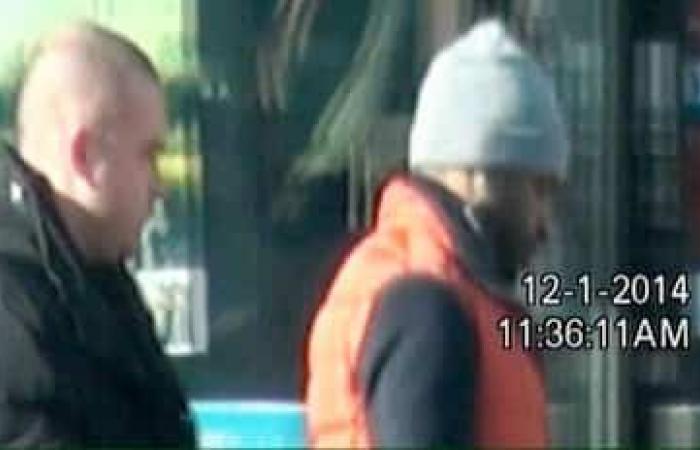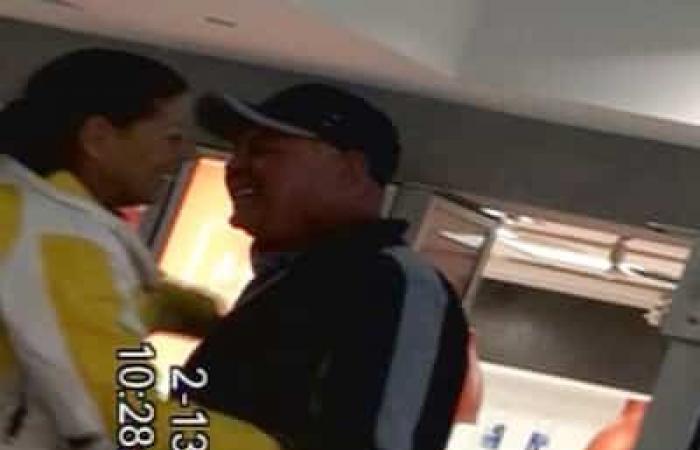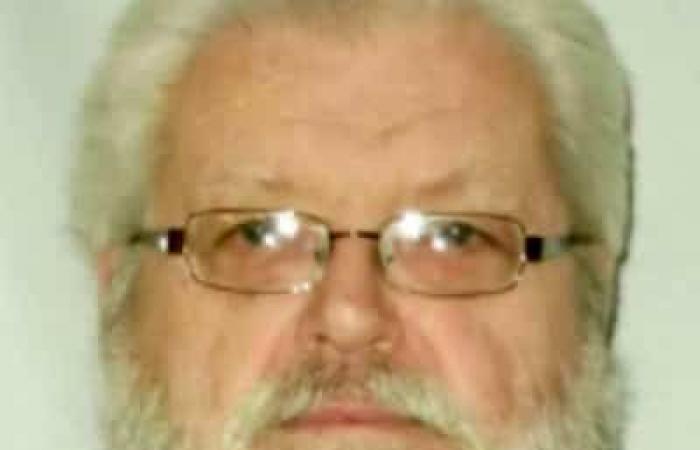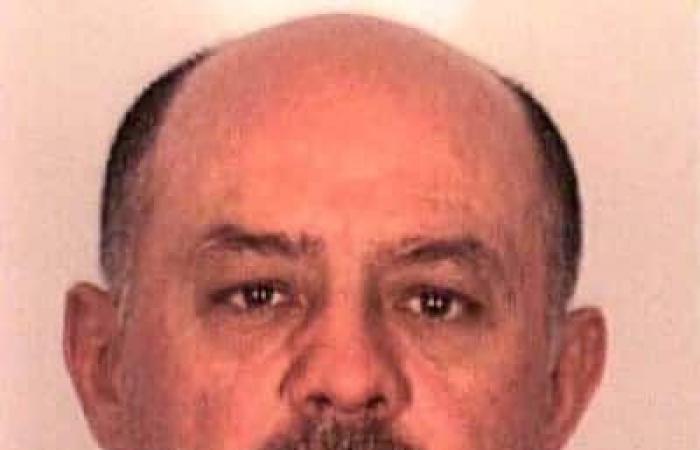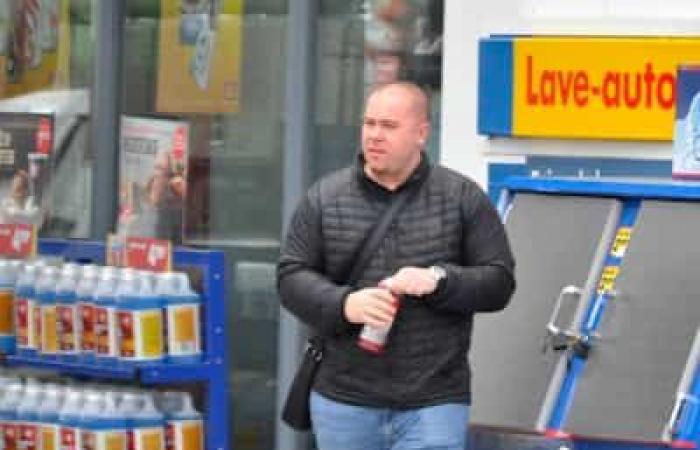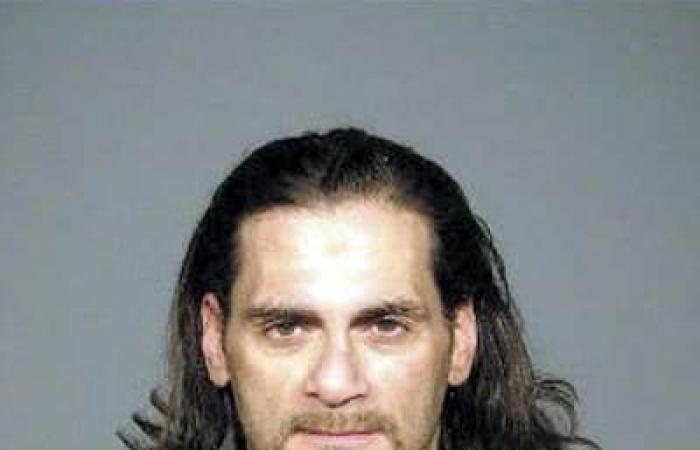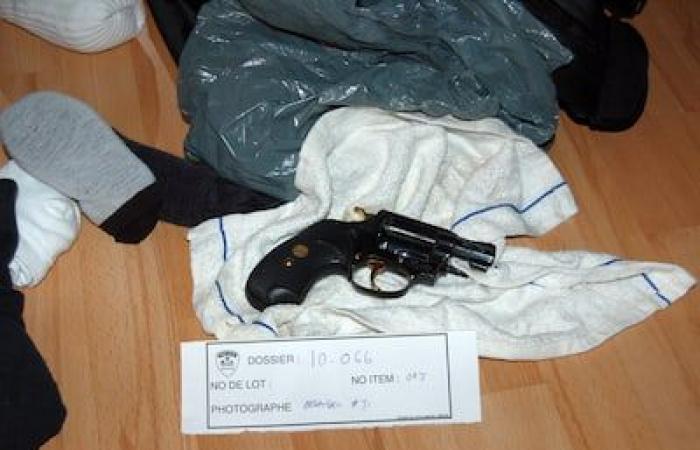He was believed to have died of natural causes. But André “Frisé” Sauvageau, a veteran member of the Hells Angels, was allegedly murdered by swallowing fentanyl without his knowledge in prison in 2019. The murder was allegedly ordered by kingpin Gregory Woolley and offered as a “gift” to the fallen leader of the Hells Angels. biker gang, Maurice “Mom” Boucher.
This is one of the explosive revelations made to the police by hitman Frédérick Silva during Project Alliance, the largest ongoing criminal investigation in the country, the QMI Agency and our Bureau of Investigation have learned.
• Also read: Hundreds of bikers say a final goodbye to their brother André Sauvageau
• Also read: Organized crime: kingpin Gregory Woolley was the best client of a hitman turned informer
• Also read: A megainvestigation to solve 65 murder contracts shakes Montreal organized crime
The secrets revealed by Silva about Sauvageau’s death are worthy of a spy film.
André Sauvageau captured on the spot by the police during a surveillance operation at Trudeau airport on February 13, 2014
Courtesy photo
Above all, his confidences force the authorities to review this case from a completely different angle, since a coroner had concluded that it was a natural death.
And this, despite the high concentration of fentanyl taken from the biker’s body during the autopsy, which was performed three days after the death.
“A gift from me”
Sauvageau, 59, was found lifeless in his bed, in his cell at Rivière-des-Prairies prison, on the morning of May 26, 2019. Resuscitation maneuvers by correctional officers and paramedics proved futile.
The presence of a blackish liquid resembling blood mixed with gastric fluid had been detected on the victim’s mouth, sheets and pillow, said coroner Julie-Kim Godin in the investigation report that she signed on January 27, 2020.
Frédérick Silva told police that Sauvageau had been murdered with the complicity of another inmate and that his murder was an order from the late gang leader Gregory Woolley, who was himself Silva’s best client.
Silva (left) was also filmed by police during Project Magot with influential gang leader Gregory Woolley in December 2014.
Courtesy photo
“Will you tell Mom that it’s a gift from me,” Woolley would later have asked Silva, when the latter was going to be transferred to the Sainte-Anne-des-Plaines penitentiary after his conviction for murder, charging him to tell Maurice Boucher the news, according to our sources.
The former leader of the Hells was then serving a life sentence in the “supermaximum” security unit of Sainte-Anne-des-Plaines for having ordered the murders of two correctional officers in 1997.
Woolley had remained loyal to Boucher, who had recruited him from the street gang scene to be part of the Montreal Rockers, the Hells’ most violent school club at the time of the biker wars which more than 160 deaths in Quebec at the end of the 1990s.
In 1998, Woolley became the first black person to gain official status in the Hells Angels organization.

We see Gregory Woolley to the right of Maurice “Mom” Boucher during a rally during the biker wars.
Photo d’archives
Visceral hatred
After Boucher’s conviction in 2002 and his expulsion from the Hells Angels organization in 2014, he and Woolley continued to communicate by writing letters to each other.
In the book The Parlorour Bureau of Investigation reported the visceral hatred that Boucher felt towards Sauvageau, a former member of Rock Machine who was among Mom’s enemies during the biker war.
“Frisé” changed sides after the two gangs reached a truce in December 2000.
Mom would not have liked Sauvageau to dare to go on a trip to the south in the company of his former mistress, Louise Mongeau, in February 2014.

The Hells Angels André Sauvageau, an ex-Rock Machine nicknamed “Frisé” who changed sides when the two gangs concluded a truce in the biker war, in December 2000, in the company of Louise Mongeau, who was the leader’s concubine of Hells Maurice “Mom” Boucher during the biker war era. They were photographed by police during a surveillance operation carried out during the Magot investigation project, at Trudeau airport, on February 13, 2014, as they returned from a trip to the south.
Courtesy photo
The police had recorded a lively conversation between Boucher and his daughter, Alexandra Mongeau, who visited him in the penitentiary that winter, during the Magot investigation project, while the former warrior leader of the Hells was the subject of an investigation for conspiracy to murder.
“You know what the connection is? Mom won’t say it there. She’ll tell you: “Well no, well no… We’re just friends.” But do you have a friend who took a woman on a trip like that, just to […] eat chips together? Eh?” Boucher had said to his daughter in a bitter tone, after having suggested that Sauvageau was a “hypocrite” and a “drain”.

A police footage showing Gregory Woolley, Mom’s ex-bodyguard, and the daughter of the former Hells leader, Alexandra Mongeau, who were both accused of plotting to murder with Boucher before being released.
Courtesy photo
Boucher died of throat cancer during his detention in July 2022, while Woolley was shot and killed in front of his wife and their baby, near the CLSC in Saint-Jean-sur-Richelieu, on July 17. November 2023.

Maurice Boucher in 2015
Courtesy photo
Digestive hemorrhage
In her investigation report, coroner Julie-Kim Godin wrote that Sauvageau “probably died of a digestive hemorrhage […] in the context of severe atherosclerotic heart disease. It was based on the opinion of the pathologist who performed the autopsy on May 29, 2019.
Three days after the motorcyclist’s death, a concentration of 14 ng of fentanyl was measured in his body, according to toxicological analyzes carried out at the Laboratory of Judicial Sciences and Legal Medicine in Montreal.
“Mr. Sauvageau did not have a prescription for fentanyl but, nevertheless, this substance was found in his blood. […] No other substances [drogue usuelle ou abus d’alcool] was detected,” mentioned Coroner Godin, without concluding that there was an overdose of this opioid, which is up to 100 times more powerful than morphine.
According to the US Department of Homeland Security, a concentration greater than 3 ng of fentanyl can be enough to cause an overdose death.
Coroner Godin specified that the day before his death, Sauvageau “presented a diminished general condition […]seemed tired, had little appetite” in addition to having ruled out the idea of seeing a doctor.

Hells Angels André Sauvageau, nicknamed “Frise”, in an undated photo from the police. Sauvageau was found dead in his cell at Rivière-des-Prairies prison on May 28, 2019, where he was in pre-trial detention awaiting trial for gangsterism and drug trafficking conspiracy, after his arrest in the project Magot investigation. COURTESY
Courtesy photo
65 plots elucidated?
On the day of Sauvageau’s funeral, hundreds of people from the Hells Angels and their support clubs, from Quebec and other Canadian provinces, came to pay their last respects to him in Montreal, on June 20, 2019, believing that their comrade had succumbed to a heart attack.
The height of irony is that when the fentanyl crisis began to claim victims in Montreal among drug users, the Hells Angels themselves got involved by ordering that offending traffickers be beaten so that they stop mixing this dangerous opioid with drugs like heroin and cocaine, reported The Montreal Journal in December 2017.
Silva, who was convicted of three murders and one attempted murder, has been collaborating for two and a half years now with the Sûreté du Québec and the Montreal police.

The hitman Frédérick Silva, photographed in May 2017 during a police surveillance. Silva began working with the police in the summer of 2022 and exposed Gregory Woolley as his best client.
Courtesy photo
His confessions could allow law enforcement to elucidate no less than 65 murders and murder plots within Quebec organized crime over the past twenty years.
Poisoned with cyanide: the Rizzuto clan allegedly ordered the murder of mafioso Giuseppe De Vito
The only other murder by poisoning in a prison environment in contemporary history in Quebec was allegedly ordered by the Rizzuto clan.
The hitman Frédérick Silva confirmed this hypothesis to the police by telling them what he knew about the assassination of mafioso Guiseppe De Vito, poisoned with cyanide on July 8, 2013 at the Donnacona penitentiary.

A prison photo of the boss Giuseppe De Vito, taken following his arrest in October 2010, at the end of a run of almost four years. Nicknamed “Ponytail”, the mafioso was poisoned with cyanide during his incarceration at the Donnacona penitentiary in July 2013. COURTESY
Courtesy photo
Silva’s revelations in the Alliance investigative project also implicate at least one prisoner accomplice, according to sources from our Bureau of Investigation and the QMI Agency.
Silva, who executed several murder contracts for the Rizzuto clan until his arrest in the winter of 2019, however, would not have participated in the plot targeting the man nicknamed “Ponytail”.
De Vito allegedly swallowed sleeping pills containing the deadly poison, according to reports published in April 2015 in The Montreal Journal.
He was then serving a 15-year prison sentence for gangsterism and cocaine importation following Operation Colisée, led by the Royal Canadian Mounted Police (RCMP) in 2006.
The dangerous kingpin was only captured in the fall of 2010 and he would have taken advantage of his long run to eliminate members of the Rizzuto clan whom he held responsible for the incriminating evidence that the RCMP had amassed against him.

Montreal police officers found a pistol in the apartment where fugitive mafioso Giuseppe De Vito was hiding in October 2010.
Courtesy photo
Do you have any information to share with us about this story?
Write to us at or call us directly at 1 800-63SCOOP.


